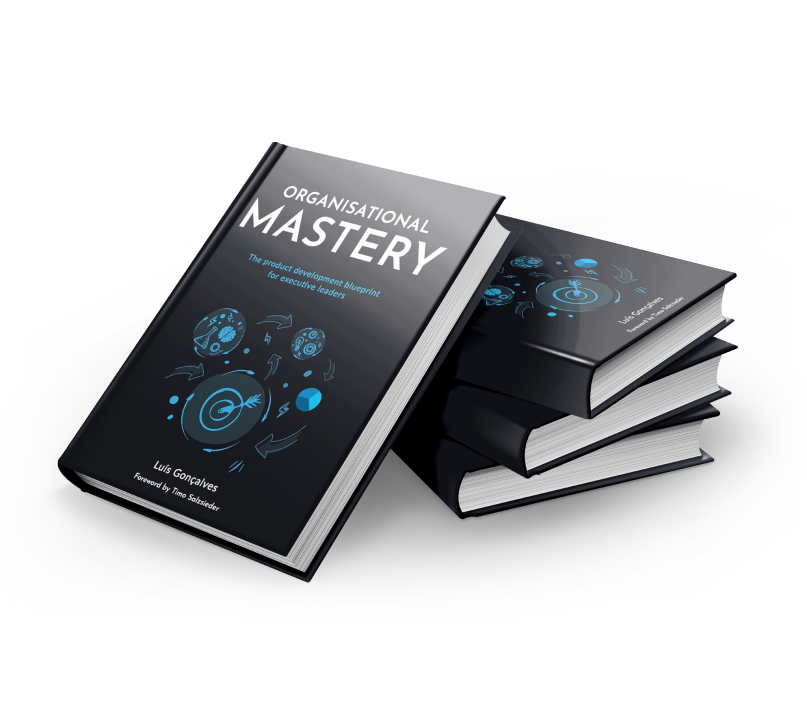Share this
A Comprehensive Guide to OKR Goal Setting
by Luis Gonçalves on Jun 16, 2024 2:53:59 AM

In the vast ocean of corporate planning and strategy, OKR goal setting emerges as a beacon of clarity and direction. OKR, or Objectives and Key Results, is a potent tool to set, track, and accomplish goals, be it for individuals, teams, or entire organizations. In this comprehensive guide, we'll delve into the principles of OKR goal setting, it's importance, methods to implement it effectively, and much more. So buckle up and get ready to take your goal setting game to the next level!
Understanding OKR Goal Setting
OKR is a goal-setting framework that helps organizations and individuals set challenging, ambitious goals with measurable results. But what exactly does this entail?
What is OKR?
Objective and Key Results, or OKR, is a methodology introduced by Andy Grove at Intel and popularized by John Doerr. It revolves around setting up clear objectives, coupled with key results that are quantifiable and measurable, leading to the successful achievement of the objectives. OKR goal setting fosters a results-driven culture and promotes transparency, alignment, and engagement within an organization.
Components of OKR
An OKR consists of an Objective, a clearly defined goal, and 3-5 Key Results, specific measures used to track the achievement of that goal. The Key Results can be based on growth, performance, revenue, or any other measurable metric. Typically, OKRs are set at the company, team, and individual level.
Importance of OKR Goal Setting
OKR goal setting isn't just another fad in the corporate world. Its implications are far-reaching and transformative.
Boosts Alignment and Collaboration
OKR goal setting fosters alignment within teams and across departments, ensuring everyone works towards common objectives. The transparency it brings facilitates better collaboration, enhancing overall performance.
Improves Focus and Accountability
By setting clear objectives with measurable results, OKR goal setting improves focus on critical tasks. It also promotes accountability as every team member understands their role in achieving the key results.
Setting Up Your OKRs
Now that we've got the basics covered, let's move on to the nitty-gritty of setting up your OKRs.
Step 1: Define Your Objectives
The first step in OKR goal setting is defining your objectives. What do you want to achieve? Your objective should be concise, actionable, and inspiring.
Step 2: Identify Key Results
After defining your objectives, identify the key results. These should be quantifiable, achievable, and lead directly to the objective.
Step 3: Align OKRs
Aligning OKRs across all levels of an organization is crucial for effective execution. This ensures everyone is moving in the same direction, promoting efficiency.
Step 4: Track Progress
An integral part of OKR goal setting is tracking progress towards your key results. This could be done through regular check-ins, updates, and reviews.
Best Practices for OKR Goal Setting
Implementing OKRs is an art. Here are some best practices to get the most out of your OKR goal setting.
Keep OKRs Simple
The power of OKR lies in its simplicity. Avoid overcomplication. Stick to the basics.
Involve Everyone
Everyone from top management to the frontline staff should be involved in the OKR process. This promotes buy-in and ensures alignment.
Maintain Flexibility
Goals can change over time, and your OKRs should be able to adapt to these changes. OKR goal setting isn't set in stone; it's a flexible framework that allows you to pivot when necessary.
Celebrate Success
Recognize and celebrate achievements once you've reached your key results. This boosts morale and motivates everyone to continue working towards their objectives.
OKR Goal Setting in Action: Case Studies
Nothing speaks louder than success stories. Let's dive into some real-world examples of OKR goal setting in action.
Google's OKR Journey
Google is perhaps the most famous adopter of the OKR framework. Since its early days, the tech giant has been leveraging OKRs to drive growth, fostering a culture of setting ambitious goals and achieving them.
LinkedIn's Success Story
LinkedIn's transformation into a thriving professional network platform is a testament to the effectiveness of OKR goal setting. LinkedIn uses OKRs to align its teams and drive user engagement, leading to its exponential growth.
Overcoming Challenges in OKR Implementation
Despite its numerous benefits, implementing OKR isn't always a walk in the park. Here are some common challenges and how to overcome them.
Resistance to Change
Introducing a new system can meet resistance. Overcome this by communicating the benefits of OKR and involving everyone in the process.
Overloading Objectives
It's tempting to overload your objectives with numerous key results. However, this can dilute focus. Maintain 3-5 key results for each objective.
FAQs
To wrap things up, let's tackle some frequently asked questions on OKR goal setting.
What's the difference between a goal and an OKR?
A goal is a broad statement of what you want to achieve, while an OKR breaks down the goal into actionable, measurable objectives and key results.
How often should OKRs be reviewed?
OKRs should be regularly reviewed. Most organizations do this on a quarterly basis, but it can be adjusted to fit your specific needs.
Are OKRs and KPIs the same thing?
While both OKRs and KPIs are tools for tracking performance, they're not the same thing. KPIs measure performance, while OKRs set objectives and key results to achieve those objectives.
Can OKRs be changed?
Yes, OKRs are flexible and can be adjusted based on changes in priorities or business conditions.
How to track OKRs?
Tracking OKRs can be done through regular check-ins, updates, and progress reviews.
What happens if OKRs aren't met?
Not meeting OKRs is not necessarily a failure, but a learning opportunity. It provides insights into what worked, what didn't, and what adjustments need to be made.
Conclusion
OKR goal setting is a powerful tool to streamline your focus, foster alignment, and drive success. Implementing it effectively, though, requires an understanding of its principles, benefits, best practices, and potential challenges. Armed with this comprehensive guide, you're now ready to conquer the world of OKR goal setting.
Did you like this article?
We enable leaders to become highly valued and recognized to make an impact on the World by helping them to design Digital Product Companies that will thrive and nourish in the Digital Age, we do this by applying our own ADAPT Methodology®.
Share this
- Agile Methodologies (18)
- Product Strategy (18)
- OKRs (16)
- Scrum (16)
- Product Mindset (14)
- Project To Product (10)
- Agile Retrospectives (9)
- CoPs (9)
- Knowledge Sharing (9)
- Time To Market (8)
- Product Discovery (7)
- Continuous Improvement (5)
- Strategy (5)
- Scrum Master (4)
- Content Marketing Strategy (3)
- Product Owner (3)
- Technical Excellency (3)
- Digital Transformation (2)
- Innovation (2)
- Scaling (2)
- Team Building (2)
- Business Model (1)
- Cost Of Delay (1)
- Customer Feedback (1)
- Customer Journey (1)
- Customer Personas (1)
- Design Thinking (1)
- Digital Leadership (1)
- Digital Product Tools (1)
- Go To Market Strategy (1)
- Google Design Sprint (1)
- Lean Budgeting (1)
- Lean Change Management (1)
- Market Solution Fit (1)
- Organisational Impediments (1)
- Outsourcing (1)
- Product (1)
- Product Metrics (1)
- Product Roadmaps (1)

Organisational Mastery
Get your free copy

ADAPT
Get your free copy

Product First
Get your free copy
